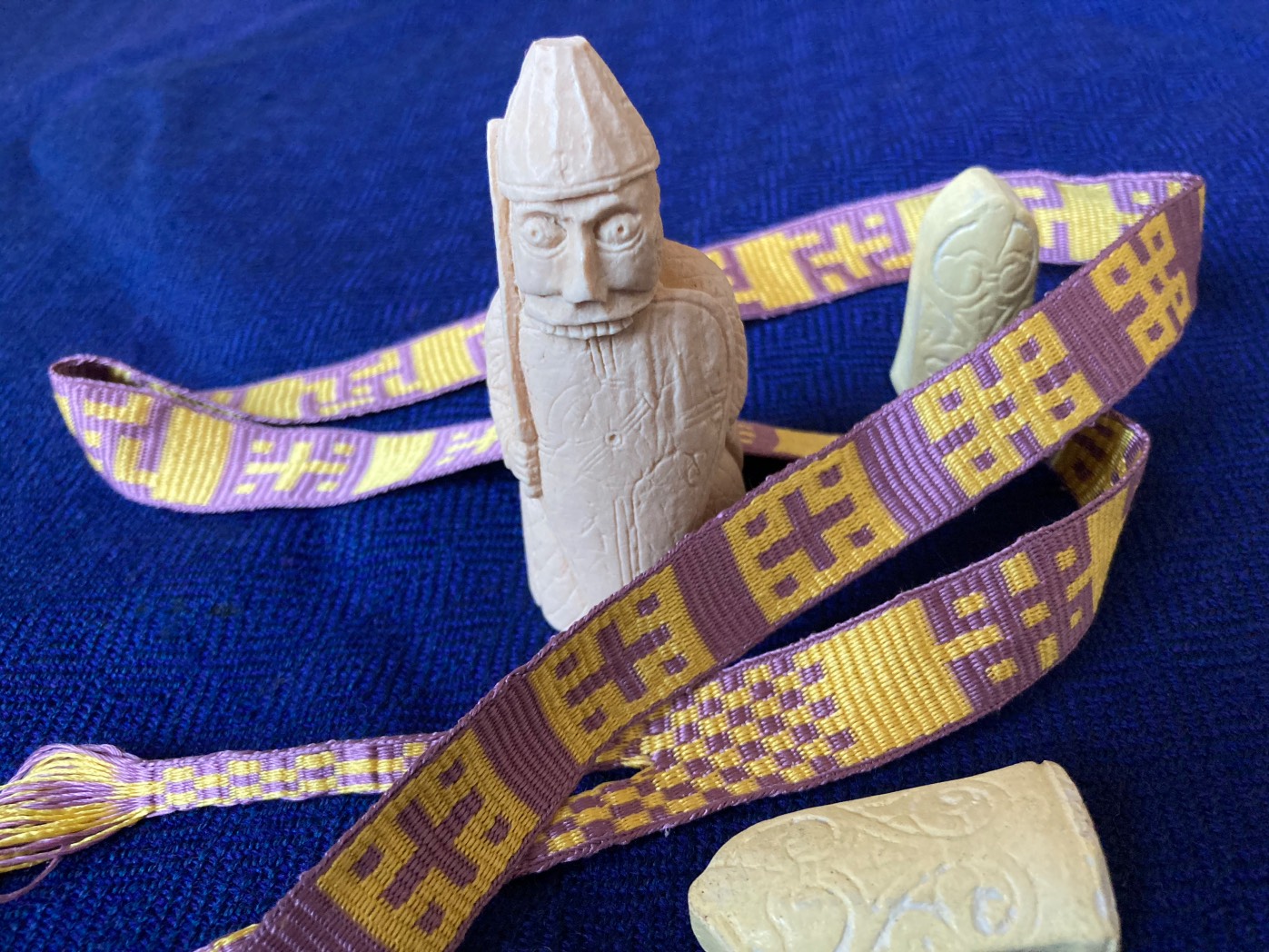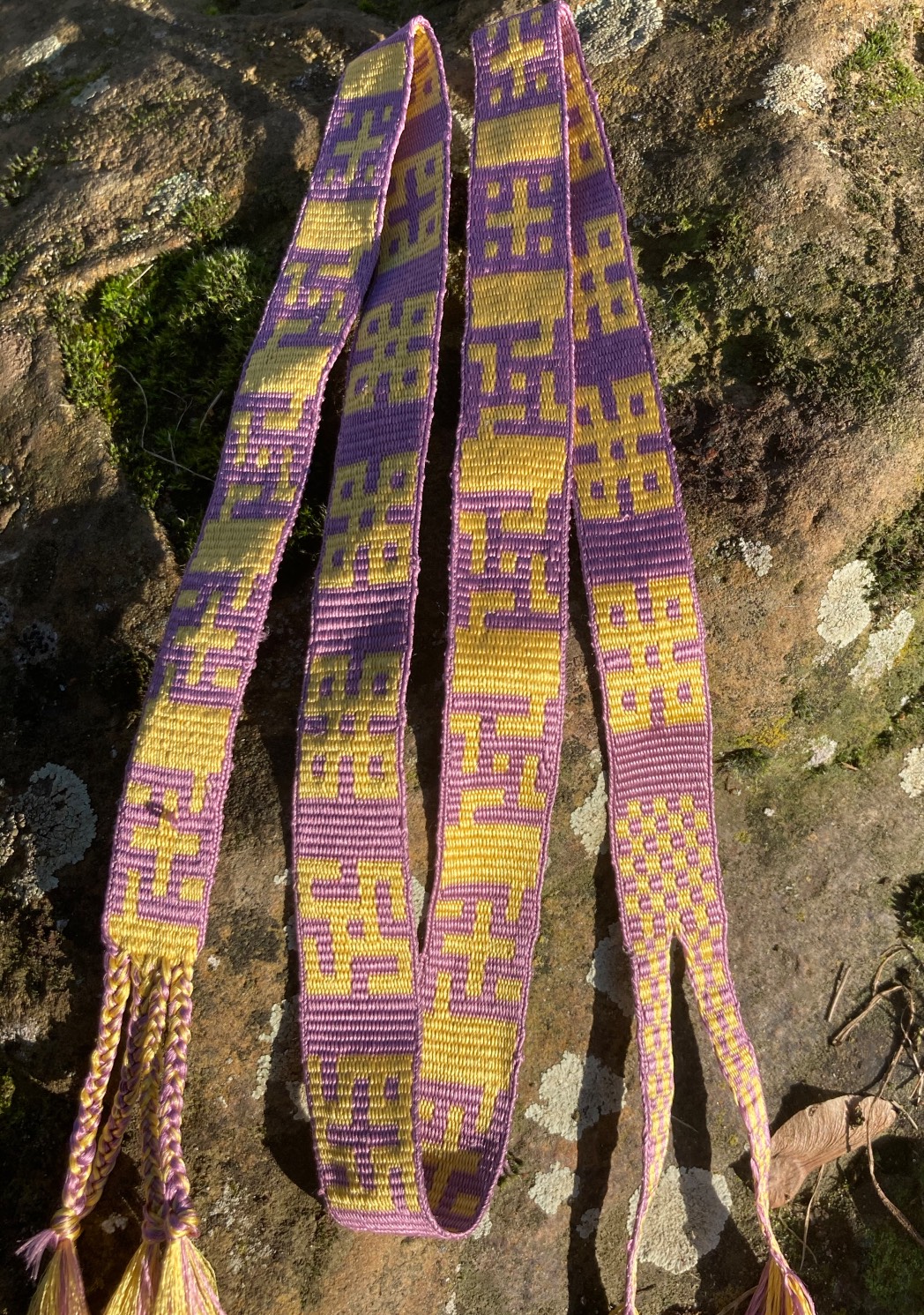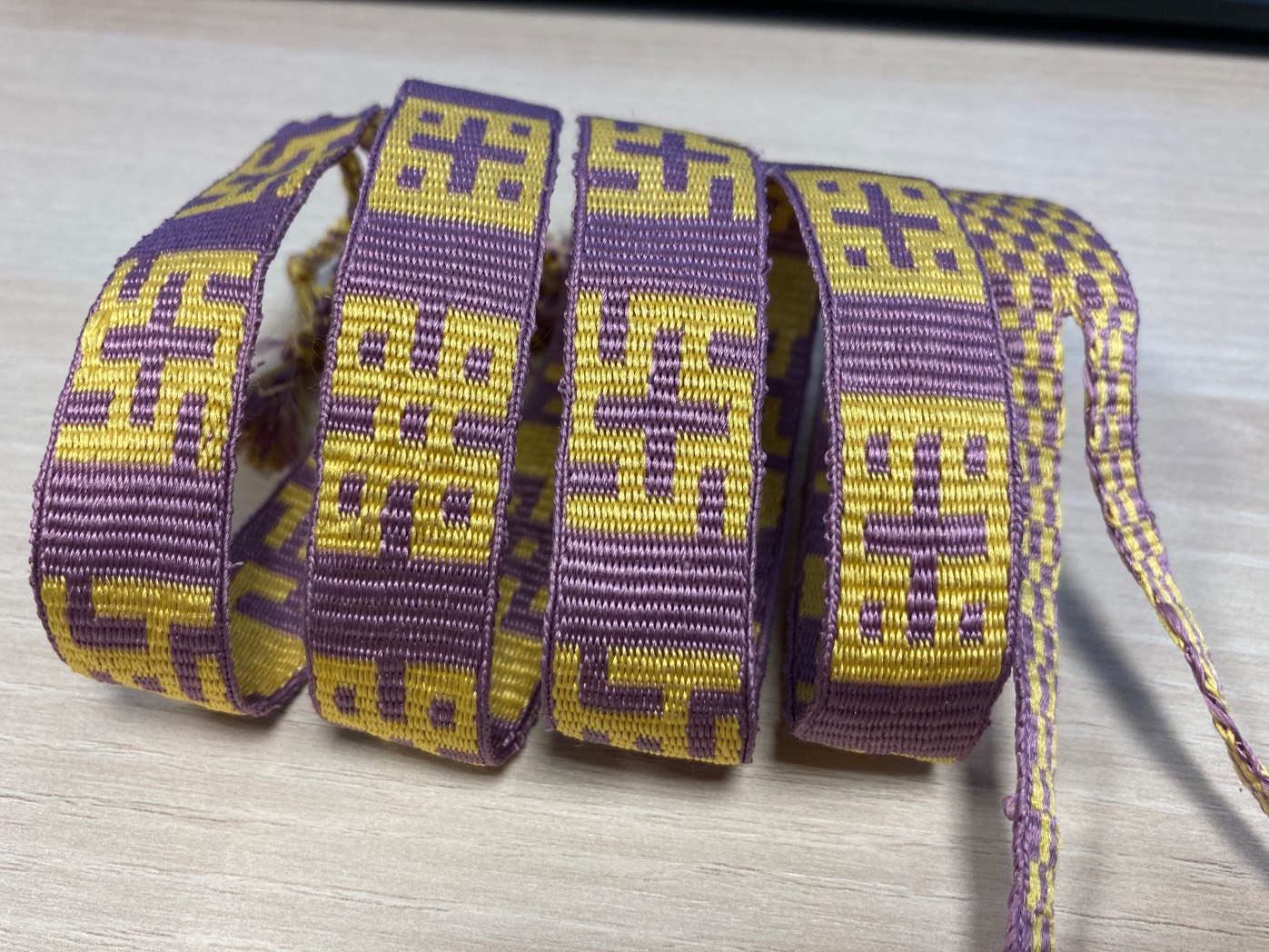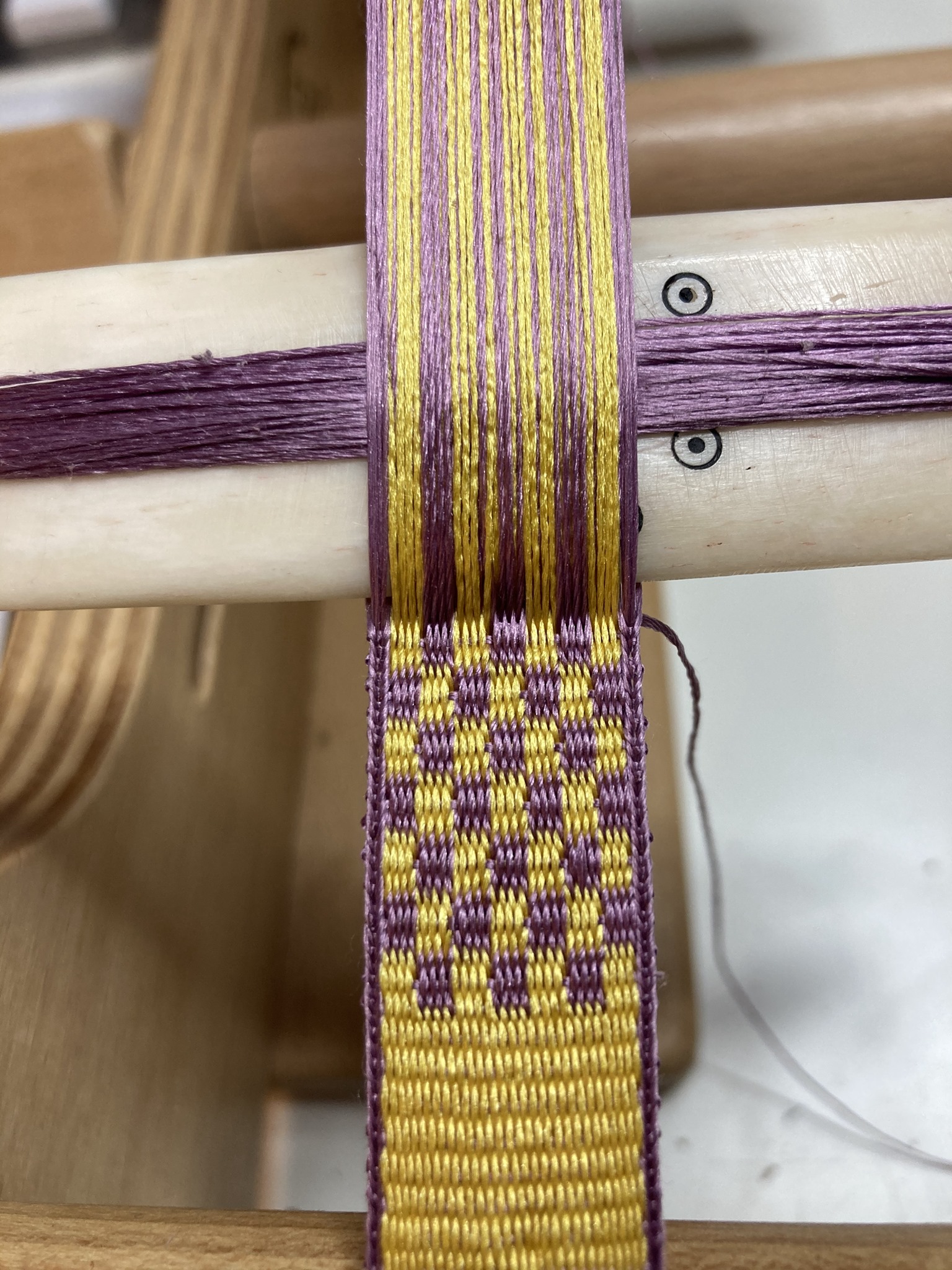Ein Siegelband aus der Kathedrale von Durham (GB)
Von den insgesamt 5 Siegelbändern, die zur Bibliothek der Durhamer Universität gehören, ist dies das Band 1.
Es ist das Siegelband einer Urkunde in der William de Bus dem Kloster von Durham das benachbarte Grundstück zur Kapelle St. Hilda in Hartlepool schenkte und die vorhergehende Schenkung seines Vaters bestätigte. Die Urkunde wurde zwischen 1194 und 1211 erstellt.
Of the 5 seal tags from the cathedral of Durham which are in the inventory of the library of the Durham University is this the braid 1.
The band it part of a charter by William de Brus to Durham cathedral, created in between 1194 and 1211.

Die Borte wurde in einseitigem Doubleface gewebt.
Als Material wurde damals gelbe und lilane zweifädrige Seide verwendet, der Schussfaden war ein etwas dickerer blauer Faden. Das Material war so fein, dass mit 32 Brettchen nur eine Breite von 1 cm erreicht wurde. Insgesamt ist das Band 48 cm lang.
The band was woven as one-sided double face.
It was woven with 2-ply twisted silk in yellow and purple. The weft was a thicker blue thread. The material was so fine that they got with 32 tablets a wide of 1 cm. The band is 49 cm long.

Die beiden Enden haben ein Karomuster und die Borte splittet sich in zwei Zöpfe auf.
Ich habe hier mit NM22 Seide gearbeitet. Mit 2 cm Breite bin ich wesentlich breiter geworden, als das Original.
The edges have a checked pattern and the band is splitted in two braids.
I used for my band NM22 silk. With a wide of 2 cm am much wider than the find.

Eine Musteranleitung wird es hier nicht geben, da sie im Buch ‚A simplified guide to historical tablet weaving‘ zu finden ist.
I won’t publish a pattern as there is one published in the book Buch ‚A simplified guide to historical tablet weaving‘.

Literatur:
Audrey Henshall, Five tablet-woven seal-tags
B Sæmundarson, D Sveinsdóttir, A Simplified Guide to Historical Tablet Weaving
Blakely, Ruth Margaret The Brus family in England and Scotland 1100 Ai- c.1290.
Muster: einseitiges Doubleface
Anleitung: eigener Entwurf
